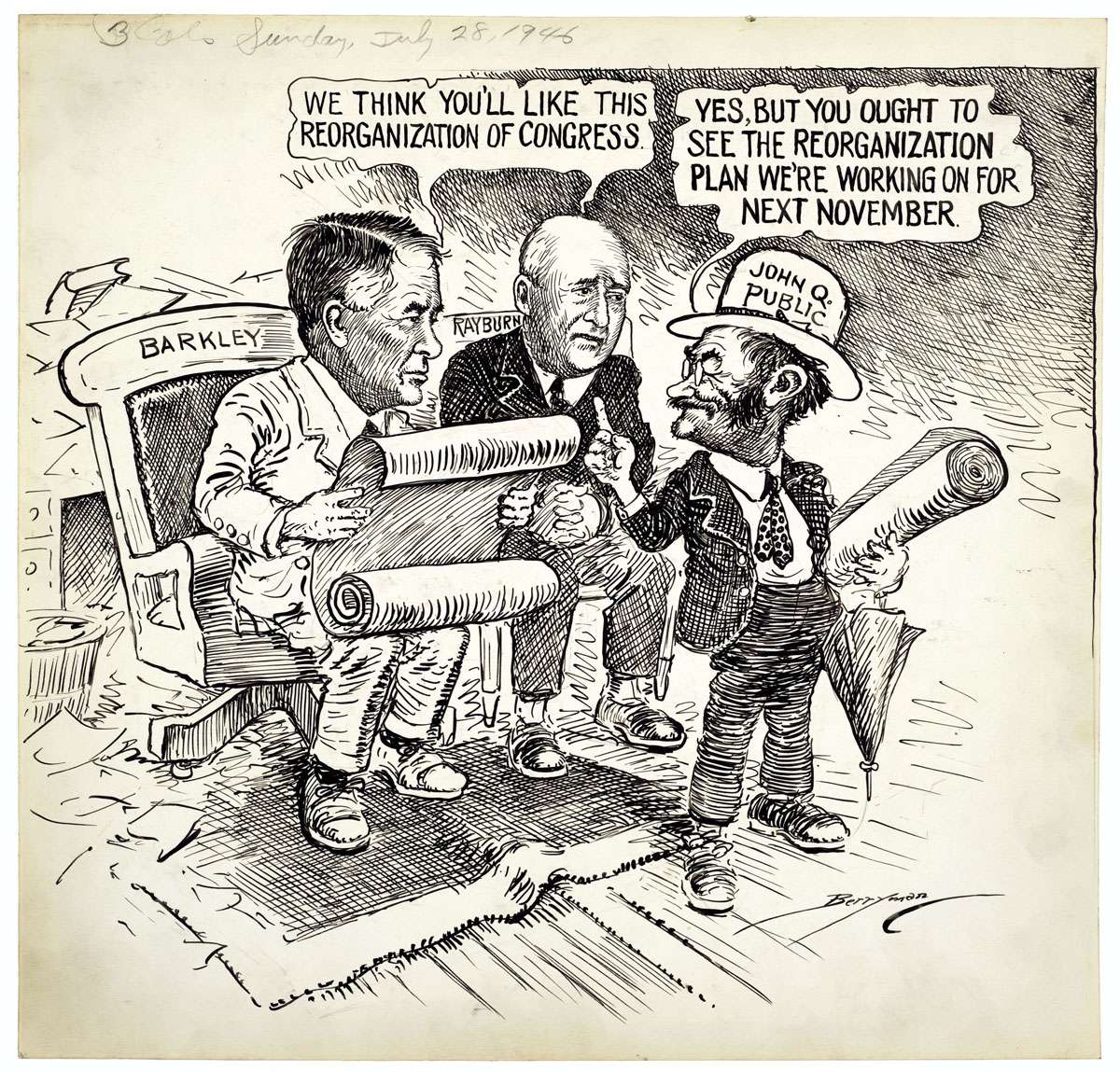Reorganization of Congress
7/28/1946
Add to Favorites:
Add all page(s) of this document to activity:

Having the voters choose their representatives is an important way that the ideal of popular sovereignty is translated into political reality. Each election allows the voters to take stock of the work of their representatives, and every two years each voter has a chance to appraise the work of their representatives in Congress. This cartoon refers to the Legislative Reorganization Act of 1946. Cartoonist Clifford Berryman appears to imply that the Democratic leadership in Congress, Senate majority leader Alben W. Barkley (D-Ky.) and House Speaker Sam Rayburn (D-Tex.), had hopes that Congressional reform would be politically popular. However, John Q. Public's reply suggests that Berryman was skeptical of reform's political impact. As it turned out, the Republicans swept to power in November, 1946, gaining control of the House and Senate.
This cartoon was drawn by Clifford Berryman, one of Washington, DC's best-known cartoonists in the early to mid-1900s. Berryman drew for the Washington Post and Evening Star newspapers. His cartoons touched on a variety of subjects including politics, elections, and both World Wars.
This cartoon was drawn by Clifford Berryman, one of Washington, DC's best-known cartoonists in the early to mid-1900s. Berryman drew for the Washington Post and Evening Star newspapers. His cartoons touched on a variety of subjects including politics, elections, and both World Wars.
This primary source comes from the Records of the U.S. Senate.
National Archives Identifier: 306100
Full Citation: Untitled. [Reorganization of Congress]; 7/28/1946; Berryman Political Cartoon Collection, 1896 - 1949; Records of the U.S. Senate, Record Group 233; National Archives Building, Washington, DC. [Online Version, https://docsteach.org/documents/document/reorganization-of-congress, April 26, 2024]Activities that use this document
- Comparing the Constitutional Process of Taking Office in Political Cartoons
Created by the National Archives Education Team
Rights: Public Domain, Free of Known Copyright Restrictions. Learn more on our privacy and legal page.



